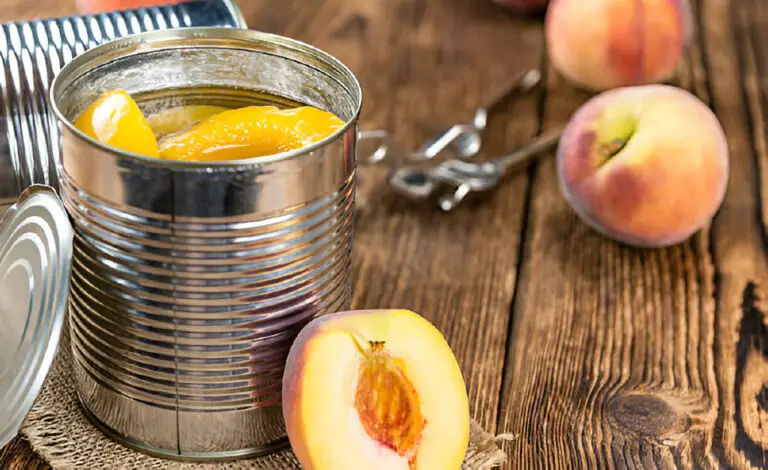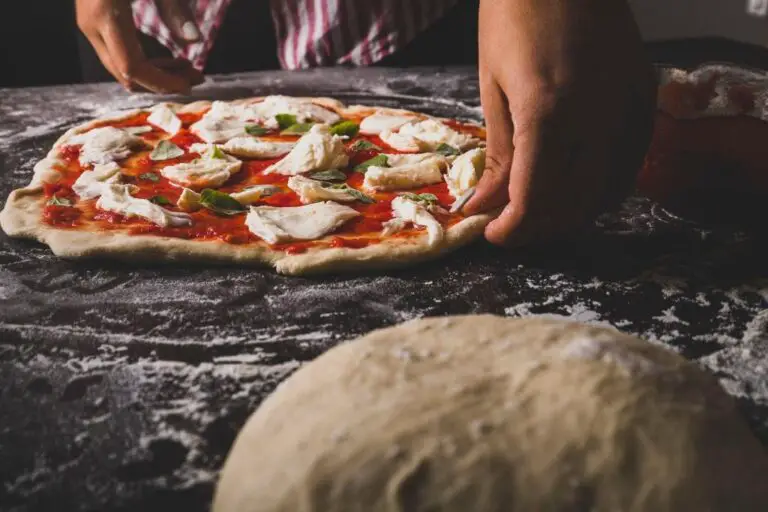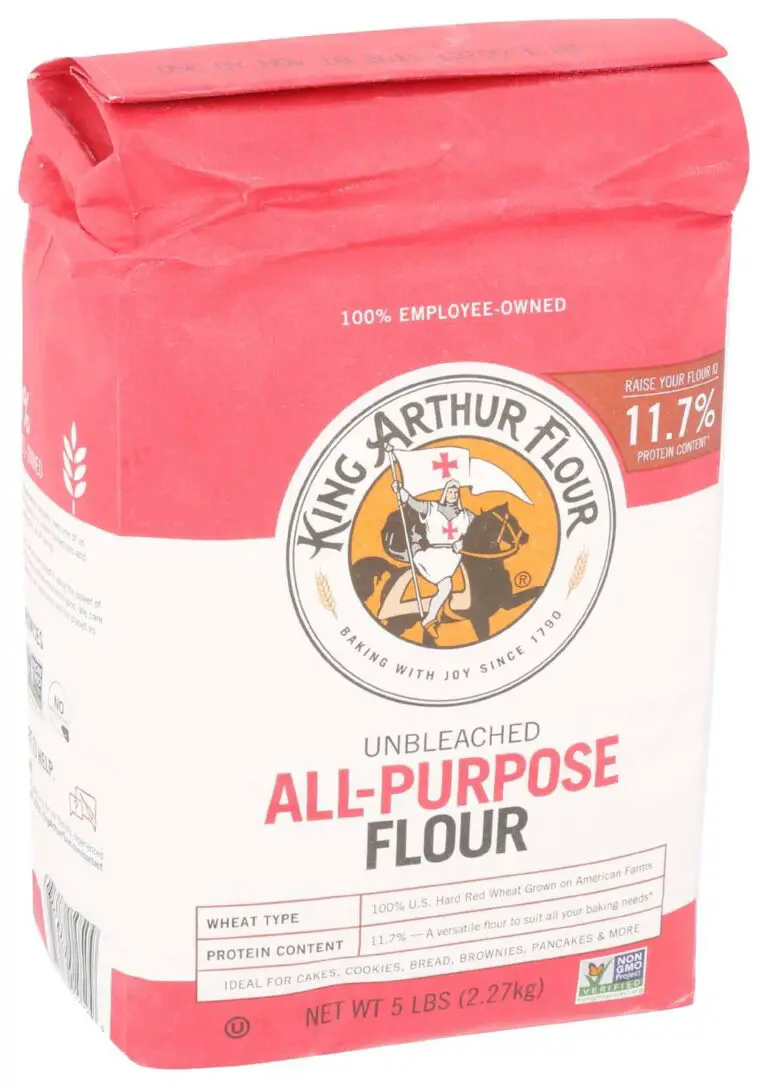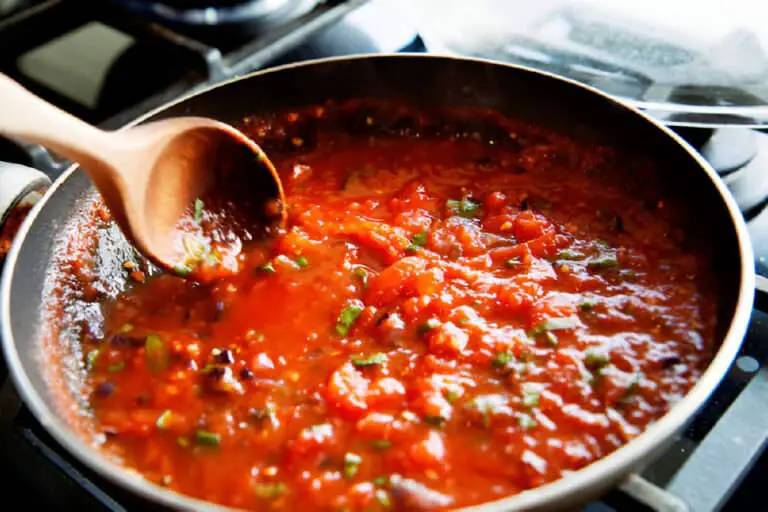How To Cook Brussel Sprouts on the Stove in Water? Boiling Cooking
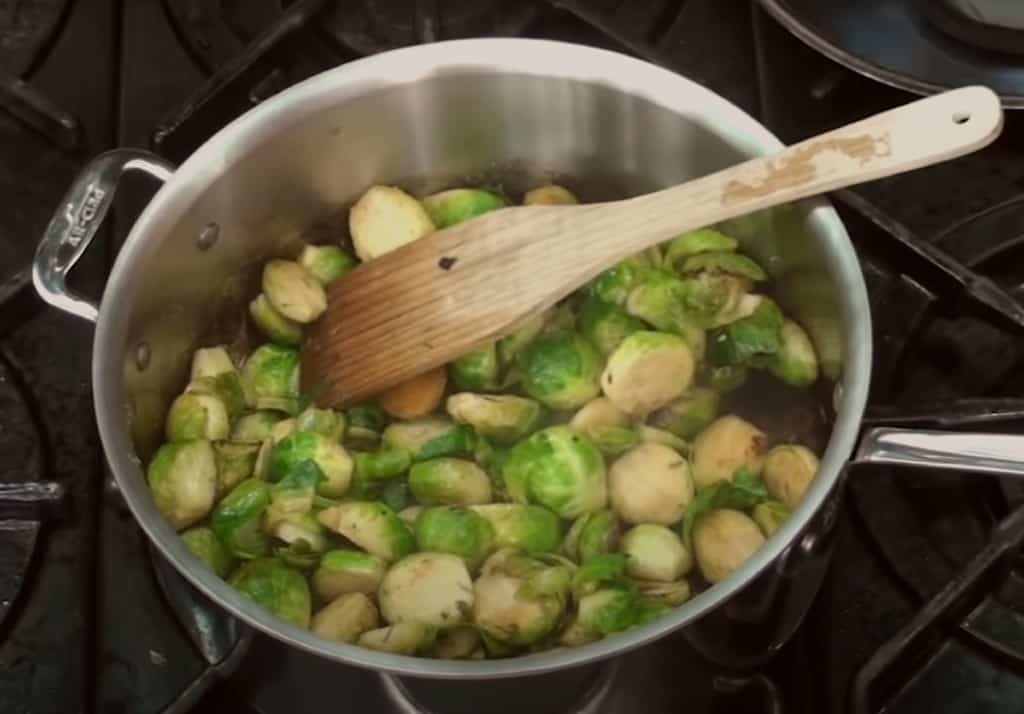
Are you looking for a simple and delicious way to prepare Brussels sprouts? Look no further! In this article, we will show you how to cook Brussels sprouts on the stove in water using the boiling cooking method. This technique not only retains the beautiful green color of the sprouts but also brings out their natural flavors, making them tender and irresistible.
Boiling Brussels sprouts on the stove is a straightforward process that yields fantastic results. Whether you’re a seasoned home cook or just starting your culinary journey, this method is perfect for you. We will guide you through each step, from selecting the freshest sprouts to adding optional seasonings for an extra burst of flavor.
Get ready to impress your family and friends with a side dish that will steal the show. Join us as we dive into the world of Brussels sprouts and uncover the secrets to achieving perfectly cooked, mouthwatering sprouts right in your own kitchen. Let’s get cooking!
Why Do You Need To Cook Brussels Sprouts on the Stove?
When it comes to cooking Brussels sprouts, the stove reigns supreme as a versatile and efficient method. While there are various ways to prepare these tiny cabbages, cooking them on the stove offers a multitude of benefits that elevate their flavors and allow for precise control over the cooking process. Let’s delve into the reasons why you need to cook Brussels sprouts on the stove and discover the magic that unfolds.
One of the primary advantages of stove-cooked Brussels sprouts is their ability to unlock their full flavor potential. By sautéing, stir-frying, or even braising them on the stove, you create the perfect conditions for caramelization and the development of rich, complex flavors.
The direct heat and contact with the cooking surface intensify the natural sweetness of Brussels sprouts, resulting in a delightful blend of nuttiness, slight bitterness, and subtle sweetness. This flavor transformation is truly a culinary marvel that can only be achieved on the stove.
Additionally, cooking Brussels sprouts on the stove provides unparalleled versatility. You have a range of options to explore, each offering its own unique culinary experience. Sautéing Brussels sprouts in a skillet with a touch of oil allows for quick cooking, resulting in tender yet slightly crispy sprouts. Stir-frying Brussels sprouts with a medley of vegetables and sauces creates a harmonious blend of textures and flavors. Boiling or blanching Brussels sprouts on the stove can be the initial step before incorporating them into other recipes, such as casseroles or gratins.
The stove offers endless possibilities to experiment and create a diverse array of Brussels sprout dishes that suit your palate and preferences.
Control over the cooking process is another key advantage of stove-cooked Brussels sprouts. Unlike baking or roasting, where the oven’s heat is distributed more evenly, the stove allows for precise heat management and the ability to adjust the cooking time as needed.
This control ensures that Brussels sprouts are cooked to perfection—tender and flavorful without becoming overcooked or mushy. You can monitor the heat, adjust the flame, and even incorporate different cooking techniques to achieve the desired texture and doneness. This level of control empowers you to create Brussels sprout dishes that suit your personal taste and culinary vision.
How To Cook Brussels Sprouts on the Stove in Water (Boiling Cooking)
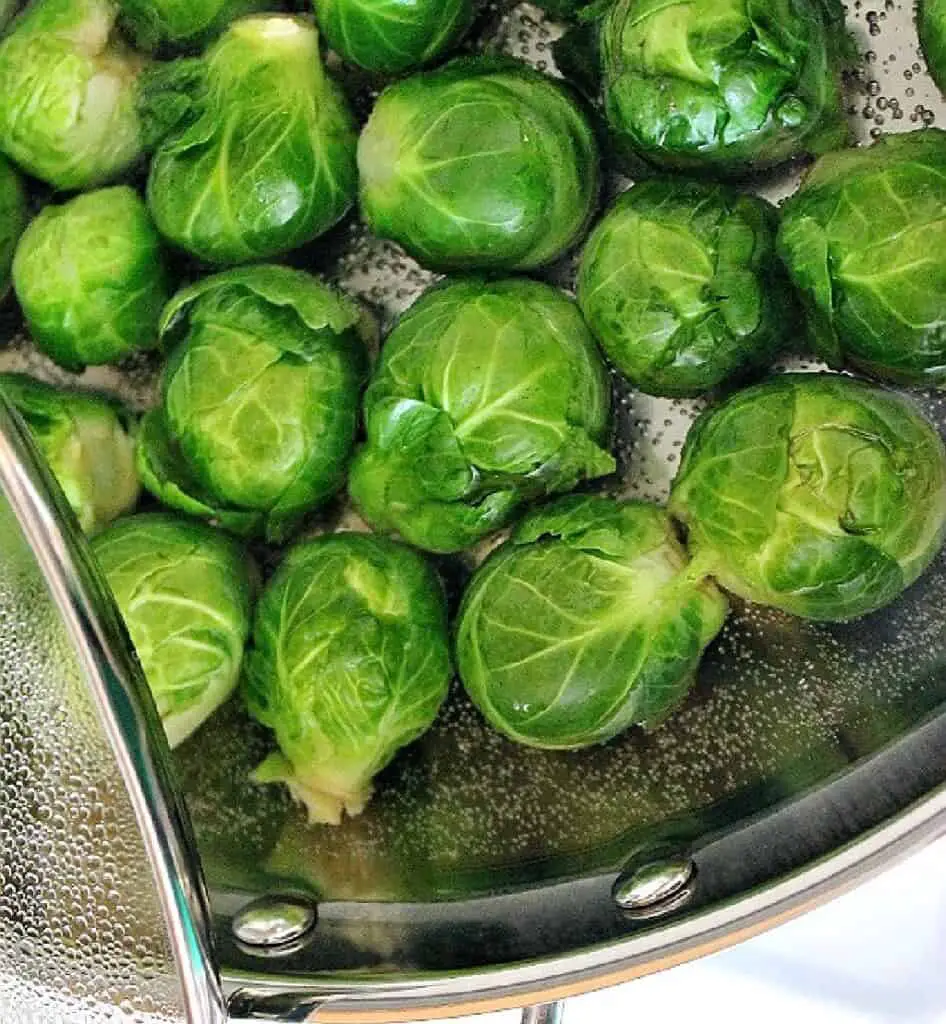
Cooking Brussels sprouts on the stove in water is a simple and effective method that brings out their natural taste and preserves their nutritional value. In this section, we will explore the step-by-step process of boiling Brussels sprouts, along with tips for selecting, preparing, and seasoning them.
Check out: Does Eating Brussels Sprouts Make You Poop and Cause Diarrhea?
Selecting and Preparing Brussels Sprouts
When choosing Brussels sprouts, opt for firm, compact sprouts with vibrant green leaves. Avoid sprouts that appear yellowed, wilted, or have loose outer leaves. Fresher sprouts will have a sweeter taste and better texture.
Before cooking, it is essential to clean and trim Brussels sprouts properly. Follow these steps:
- Rinse the Brussels sprouts under cold water to remove any dirt or debris.
- Trim off the tough stem ends using a sharp knife.
- Remove any loose or damaged outer leaves.
Equipment and Ingredients Needed
To cook Brussels sprouts on the stove in water, you will need the following equipment and ingredients:
| Equipment | Ingredients |
| Large pot with lid | Brussels sprouts |
| Colander or slotted spoon | Water |
| Knife | Salt (optional) |
| Cutting board | Herbs or spices (optional) |
Boiling Brussels Sprouts Step-by-Step
Now, let’s dive into the process of boiling Brussels sprouts in water:
- Fill a large pot with enough water to completely submerge the Brussels sprouts.
- Place the pot on the stove and turn the heat to high, bringing the water to a rolling boil.
- While the water is heating, prepare the Brussels sprouts by cutting them in half or leaving them whole, depending on your preference.
- Once the water reaches a boil, carefully add the Brussels sprouts to the pot.
- If desired, season the water with a pinch of salt to enhance the sprouts’ flavor.
- Reduce the heat to medium-low to maintain a gentle boil.
- Cook the Brussels sprouts for 8-10 minutes, or until they are tender when pierced with a fork. Cooking time may vary depending on the size of the sprouts.
- To check for doneness, remove one sprout using a slotted spoon or pour the sprouts into a colander and sample a piece. They should be cooked but still retain a slight bite.
- Once cooked to your desired tenderness, drain the Brussels sprouts using a colander or slotted spoon.
Timing and Doneness
Timing is crucial when boiling Brussels sprouts, as overcooking can result in a mushy texture and loss of flavor. Here are some general guidelines for achieving various levels of doneness:
- 8 minutes: Brussels sprouts will be crisp-tender with a slightly crunchy texture.
- 10 minutes: Brussels sprouts will be tender with a more pronounced flavor.
- 12 minutes: Brussels sprouts will be very tender and have a softer texture.
Remember to check the sprouts for tenderness throughout the cooking process, as individual preferences for doneness may vary.
Flavoring Options and Variations
While boiling Brussels sprouts in water brings out their natural taste, you can add extra flavor by incorporating herbs or spices. Here are some options to consider:
- Garlic and Herb: Add a few cloves of minced garlic and a sprig of your favorite fresh herbs, such as rosemary or thyme, to the boiling water.
- Lemon Zest: Grate the zest of a lemon and add it to the pot for a bright, citrusy flavor.
- Red Pepper Flakes: Sprinkle some red pepper flakes into the water to give the sprouts a hint of heat.
- Balsamic Glaze: After boiling, drizzle the cooked Brussels sprouts with a balsamic glaze for a tangy and sweet finish.
Feel free to experiment with different flavor combinations and find your favorite.
Serving Suggestions
Boiled Brussels sprouts can be enjoyed in various ways. Here are a few serving suggestions:
- Salads: Toss boiled Brussels sprouts into your favorite salads for a delightful crunch and a unique twist. Pair them with crisp lettuce, sliced apples, toasted nuts, and a tangy vinaigrette for a refreshing and wholesome salad.
- Side Dishes: Boiled Brussels sprouts make an excellent side dish for any meal. Season them with salt, pepper, and a drizzle of olive oil for a simple and elegant accompaniment. Alternatively, sauté them with bacon or pancetta for a savory treat.
- Roasted Vegetable Medley: Combine boiled Brussels sprouts with other roasted vegetables like carrots, butternut squash, and red onions. Toss them in olive oil, sprinkle them with your favorite herbs, and roast them in the oven until they caramelize and develop a rich flavor.
- Stir-Fries: Add boiled Brussels sprouts to stir-fries for a delightful burst of flavor and texture. Pair them with colorful bell peppers, snap peas, and your choice of protein. Season with soy sauce, ginger, and garlic for an irresistible Asian-inspired dish.
Experiment with different ingredients and cooking styles to find your favorite ways of serving boiled Brussels sprouts.
Frequently Encountered Issues and Troubleshooting
While boiling Brussels sprouts is a straightforward process, some common issues may arise. Here are solutions to address them:
- Overcooking: To avoid mushy Brussels sprouts, be vigilant with the cooking time. Check the sprouts regularly and remove them from the boiling water as soon as they are tender but still slightly crisp.
- Undercooking: If your Brussels sprouts are too firm, they may need additional cooking time. Simmer them for a few more minutes, keeping an eye on their tenderness.
- Bitter Taste: If your boiled Brussels sprouts taste bitter, it could be due to overcooking or using older sprouts. Reduce the cooking time and choose fresher sprouts for a milder flavor.
- Mushy Texture: Overcooking can lead to a mushy texture of Brussels sprouts. Ensure that you cook the sprouts until they are tender but still have some bite. Check for doneness regularly.
- Unpleasant Odor: If your Brussels sprouts have a strong, unpleasant odor during cooking, it could be an indication of spoiled sprouts. Discard them and use fresh ones.
By following the recommended cooking time and selecting fresh Brussels sprouts, you can avoid these issues and enjoy perfectly boiled sprouts.
Other Cooking Methods for Brussels Sprouts
While boiling is a popular method, there are alternative ways to cook Brussels sprouts that offer different flavors and textures. Consider trying these methods:
- Roasting: Toss Brussels sprouts in olive oil, salt, and pepper, then roast them in the oven until they are crispy and caramelized.
- Sautéing: Heat oil or butter in a pan, add Brussels sprouts, and cook them over medium-high heat until they are golden brown and tender.
- Steaming: Place Brussels sprouts in a steamer basket and steam them until they are tender. This method helps retain their vibrant green color.
- Grilling: Thread Brussels sprouts onto skewers and grill them over medium heat until they are charred and tender. Grilling adds a smoky flavor that compliments the natural taste of the sprouts.
Each cooking method brings out unique characteristics of Brussels sprouts, allowing you to explore diverse culinary experiences.
Conclusion
Cooking Brussels sprouts on the stove in water is a simple yet effective way to prepare this versatile vegetable. By following the steps outlined in this article, you can achieve perfectly cooked Brussels sprouts that are tender and flavorful. Remember to experiment with different seasonings and serving suggestions to create your own culinary masterpieces. Enjoy the natural goodness of Brussels sprouts through this easy and nutritious cooking method!
FAQs
Can I use frozen Brussels sprouts?
Yes, you can use frozen Brussels sprouts for boiling. However, keep in mind that frozen sprouts may require slightly longer cooking times compared to fresh sprouts. Follow the package instructions for the recommended cooking time, or adjust it based on the desired tenderness.
Are Brussels sprouts bitter when boiled?
When properly cooked, Brussels sprouts should not taste bitter. Bitterness can be a result of overcooking or using older sprouts. Be mindful of the cooking time and choose fresh sprouts to ensure a milder and more enjoyable flavor.
Can I add other vegetables to the boiling water with Brussels sprouts?
Yes, you can add other vegetables to the boiling water along with Brussels sprouts to create a flavorful medley. Vegetables like carrots, cauliflower, or green beans can be excellent additions. Just keep in mind that different vegetables may require varying cooking times, so adjust accordingly or add them in stages.
How should I store leftover boiled Brussels sprouts?
To store leftover boiled Brussels sprouts, allow them to cool to room temperature. Place them in an airtight container or resealable bag and refrigerate. Properly stored, they can last for up to 3-4 days. However, note that reheating them may result in a slightly softer texture.
Can I reheat boiled Brussels sprouts?
Yes, you can reheat boiled Brussels sprouts. To retain their texture and flavor, it is recommended to reheat them using gentle methods such as steaming, sautéing, or microwaving. Avoid excessive reheating, as it can lead to further softening.
Do boiled Brussels sprouts retain their vibrant green color?
Boiled Brussels sprouts may lose some of their vibrant green color during cooking. However, by following proper cooking techniques and not overcooking them, you can help retain their green hue to a significant extent.
Are there any safety precautions to keep in mind while boiling Brussels sprouts?
When boiling Brussels sprouts, it is essential to handle hot water and utensils with caution to prevent burns. Always use oven mitts or potholders when handling hot pots or pans. Additionally, ensure that the sprouts are cooked thoroughly to avoid any potential foodborne illnesses.

